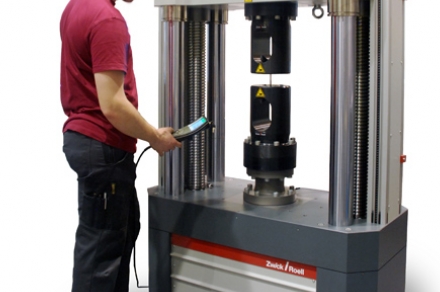Articles
Weld Fastening

Add to my favorite
2012-07-17
While fastening with bolt and nut occupies much of the time of the fastening science, there are numerous other techniques of attachment. Chief among these is the use of welding to attach components. Welding is a familiar process with sheet metal assembly. Car bodies, appliances, and almost everything that is made of two or more pieces of sheet steel can be, and is, usually welded together. To facilitate assembly further and to allow for removal and replacement strategies, fasteners are often welded in place at the attachment points with numerous corollary advantages. While most of the fasteners that are welded in place are done so with the resistance projection weld method, there are some applications that require a different technique. We’ll start with a short reminder course on welding and the major methods before going into resistance welding in depth.
Welding
Welding is a step further up the chain of metallic fastening via melted metal. Step one is soldering. Using a low melting point metal to “glue” the two or more pieces together about states the method. The joint components are placed in adjacent position to each other, the area is heated, and the solder is melted into place. Cheap, efficient method of producing a low strength joint (shear strengths for soldered joints are approximately 30–45 N/mm2, dependent upon the type of solder used). If a stronger joint strength is needed, the process of brazing is used. Brazing is much like soldering except a higher melting point “filler” material is melted into the joint interfaces. While joint strengths are about 250–325 N/mm2 are usual, the higher heat may cause problems of distortion, melting or warping of components (especially if near plastic), discoloration or corrosion.
Finally we arrive at welding. Welding differs from the other two methods mentioned in that the former methods which use a melted “glue/metallic” to stick the component parts together. Welding actually melts the components together, fusing the joint at the weld area into a single identity. The way that this is accomplished varies by method but all use heat, pressure or a combination of both. The pressure welding part squeezes the surfaces together while the heat source melts the base metal. The area then solidifies, producing a uniform area, fused into one surface. The heat source is commonly by combustible gas or electric current. There are some other exotic methods also available (laser welding, electron beam, etc. but their applications have little to do with fastening).
In place fasteners are required to attach other components to the sheet metal and in many cases the back side (blind side) of the attached fastener is not available to the assembly worker to access. Among the common fasteners attached by welding are weld nuts and weld studs, threaded studs for clips, and tapping plates (used to thicken an area for increased strength of attachment).
Often small parts and sub-assemblies are welded on to sheet metal directly rather than spend the time and labor to mechanically attached them with threaded fasteners. This is especially true with inexpensive products which, when rendered inoperative, are replaced entirely rather than disassembled for sub-component replacement (for example, electric razors, toasters, fans, small toys, and so on).
Gas Welding and MIG & TIG Welding System
Most fasteners and attachments of other components to sheet metal are welded using the resistance welding method. Before discussing this method at length, it should be noted that some items are attached with other methods. Gas welding along with the MIG (Metal Inert Gas) and the TIG (Tungsten Inert Gas) welding systems utilize a heat source (oxygen and acetylene or electric current) for the heat source and a rod of metal that is used to add volume to the weld area (Fig. 1). Useful when a heavy load in the joint is expected, the heavy weld area sustains loads that would tear apart a resistance welded joint. Inert gas is flowed over the weld area during fusion to prevent porosity and brittleness in the MIG and TIG systems. While few fasteners are welded using these methods, large, heavy components are often fastened with these processes.
Gas welding is cheap and has a low capital cost. Easily portable, it is the fix for many “on-line” problems. But its slowness means that it is a more expensive way to fasten objects if there is a considerable amount of welding to be done. Inert gas welding uses a wire fed electrode and a gas supply, usually carbon dioxide, when welding sheet steel. The process fits in well with the use of robotic assembly and welding. TIG welding is similar except the electrode is tungsten and is not consumed in the process. Originally developed for welding magnesium and it is used also for aluminum, copper, stainless steel and other hard-to-weld metals. The gas flowing over the weld area is usually argon or helium, preventing ignition of magnesium and protecting the area from the effects like porosity from atmospheric oxygen and brittleness mentioned above. A few threaded studs are welded onto truck frames and other heavy section metal sections with these techniques. Aircraft and heavy equipment also utilizes these methods as the parts welded on generally are of fairly large diameter (8-30mm diameters) which is beyond resistance welding capacity.
Welding
Welding is a step further up the chain of metallic fastening via melted metal. Step one is soldering. Using a low melting point metal to “glue” the two or more pieces together about states the method. The joint components are placed in adjacent position to each other, the area is heated, and the solder is melted into place. Cheap, efficient method of producing a low strength joint (shear strengths for soldered joints are approximately 30–45 N/mm2, dependent upon the type of solder used). If a stronger joint strength is needed, the process of brazing is used. Brazing is much like soldering except a higher melting point “filler” material is melted into the joint interfaces. While joint strengths are about 250–325 N/mm2 are usual, the higher heat may cause problems of distortion, melting or warping of components (especially if near plastic), discoloration or corrosion.
Finally we arrive at welding. Welding differs from the other two methods mentioned in that the former methods which use a melted “glue/metallic” to stick the component parts together. Welding actually melts the components together, fusing the joint at the weld area into a single identity. The way that this is accomplished varies by method but all use heat, pressure or a combination of both. The pressure welding part squeezes the surfaces together while the heat source melts the base metal. The area then solidifies, producing a uniform area, fused into one surface. The heat source is commonly by combustible gas or electric current. There are some other exotic methods also available (laser welding, electron beam, etc. but their applications have little to do with fastening).
In place fasteners are required to attach other components to the sheet metal and in many cases the back side (blind side) of the attached fastener is not available to the assembly worker to access. Among the common fasteners attached by welding are weld nuts and weld studs, threaded studs for clips, and tapping plates (used to thicken an area for increased strength of attachment).
Often small parts and sub-assemblies are welded on to sheet metal directly rather than spend the time and labor to mechanically attached them with threaded fasteners. This is especially true with inexpensive products which, when rendered inoperative, are replaced entirely rather than disassembled for sub-component replacement (for example, electric razors, toasters, fans, small toys, and so on).
Gas Welding and MIG & TIG Welding System
Most fasteners and attachments of other components to sheet metal are welded using the resistance welding method. Before discussing this method at length, it should be noted that some items are attached with other methods. Gas welding along with the MIG (Metal Inert Gas) and the TIG (Tungsten Inert Gas) welding systems utilize a heat source (oxygen and acetylene or electric current) for the heat source and a rod of metal that is used to add volume to the weld area (Fig. 1). Useful when a heavy load in the joint is expected, the heavy weld area sustains loads that would tear apart a resistance welded joint. Inert gas is flowed over the weld area during fusion to prevent porosity and brittleness in the MIG and TIG systems. While few fasteners are welded using these methods, large, heavy components are often fastened with these processes.
Gas welding is cheap and has a low capital cost. Easily portable, it is the fix for many “on-line” problems. But its slowness means that it is a more expensive way to fasten objects if there is a considerable amount of welding to be done. Inert gas welding uses a wire fed electrode and a gas supply, usually carbon dioxide, when welding sheet steel. The process fits in well with the use of robotic assembly and welding. TIG welding is similar except the electrode is tungsten and is not consumed in the process. Originally developed for welding magnesium and it is used also for aluminum, copper, stainless steel and other hard-to-weld metals. The gas flowing over the weld area is usually argon or helium, preventing ignition of magnesium and protecting the area from the effects like porosity from atmospheric oxygen and brittleness mentioned above. A few threaded studs are welded onto truck frames and other heavy section metal sections with these techniques. Aircraft and heavy equipment also utilizes these methods as the parts welded on generally are of fairly large diameter (8-30mm diameters) which is beyond resistance welding capacity.
READ NEXT

Subscribe







